Challenge
AI-powered assistants like ChatGPT, Gemini, Copilot, and others are quickly changing how we discover content online. These tools often bypass traditional search engines, directly recommending websites and pages in their responses.
To stay competitive in this new landscape, you need to understand:
- See which AI platforms send traffic to your competitors
- Uncover the content, keywords, and formats AI tools reference
- Boost your presence in AI answers with smart messaging and tech fixes
Ready to uncover the hidden drivers of AI discovery and grow your visibility across AI search platforms?
Use this step-by-step guide through the Traffic & Market Toolkit and other Semrush Toolkits to track AI visibility, analyze competitive performance, and adapt your strategy for the AI-first web.
Step 1. Identify Which AI Assistants Are Sending Traffic to Competitors
Start your research in the AI Traffic dashboard—your go-to tool for uncovering how large language models (LLMs) like ChatGPT, Gemini, Copilot, and others are sending traffic to specific domains.
Understanding the key metrics in this dashboard helps you spot emerging discovery channels and benchmark your presence against competitors.
Use the Top Sources chart to get a visual breakdown of traffic volume from each AI assistant. Then scroll down to the All Sources table to explore detailed metrics, including:
- Referring domains (e.g. chatgpt.com, perplexity.ai, copilot.microsoft.com)
- Traffic share and visit volume by source
- Growth or decline indicators to highlight emerging or fading sources
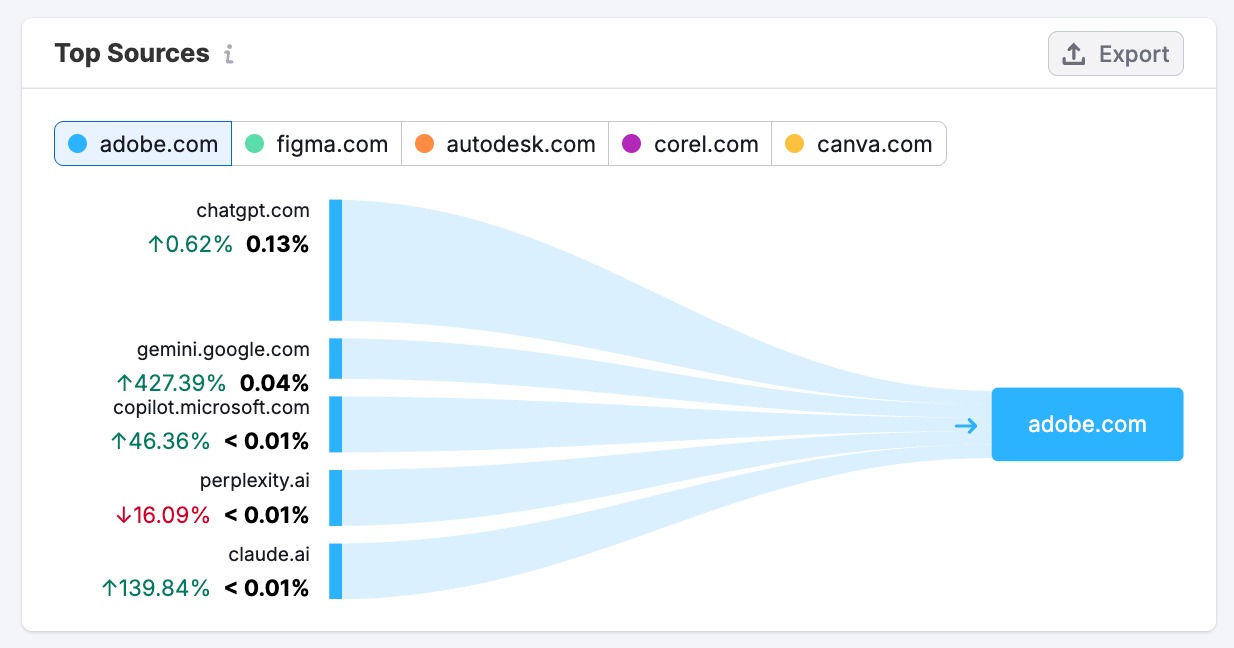
This view reveals which AI assistants are actively referring traffic to your competitors—and where your domain may be underperforming. By identifying gaps and trends early, you can adjust your strategy to improve visibility across the AI-powered web.
Step 2. Analyze Competitors’ Top Pages for AI Visibility Clues
Navigate to the Top Pages dashboard to see which pages on competitor sites are attracting the most traffic.
Apply the Referral Traffic Filter to narrow your focus to content that receives visits from external sources. While not all referrals come from AI assistants, this filter helps you zero in on pages that are possibly being cited or linked by LLMs.
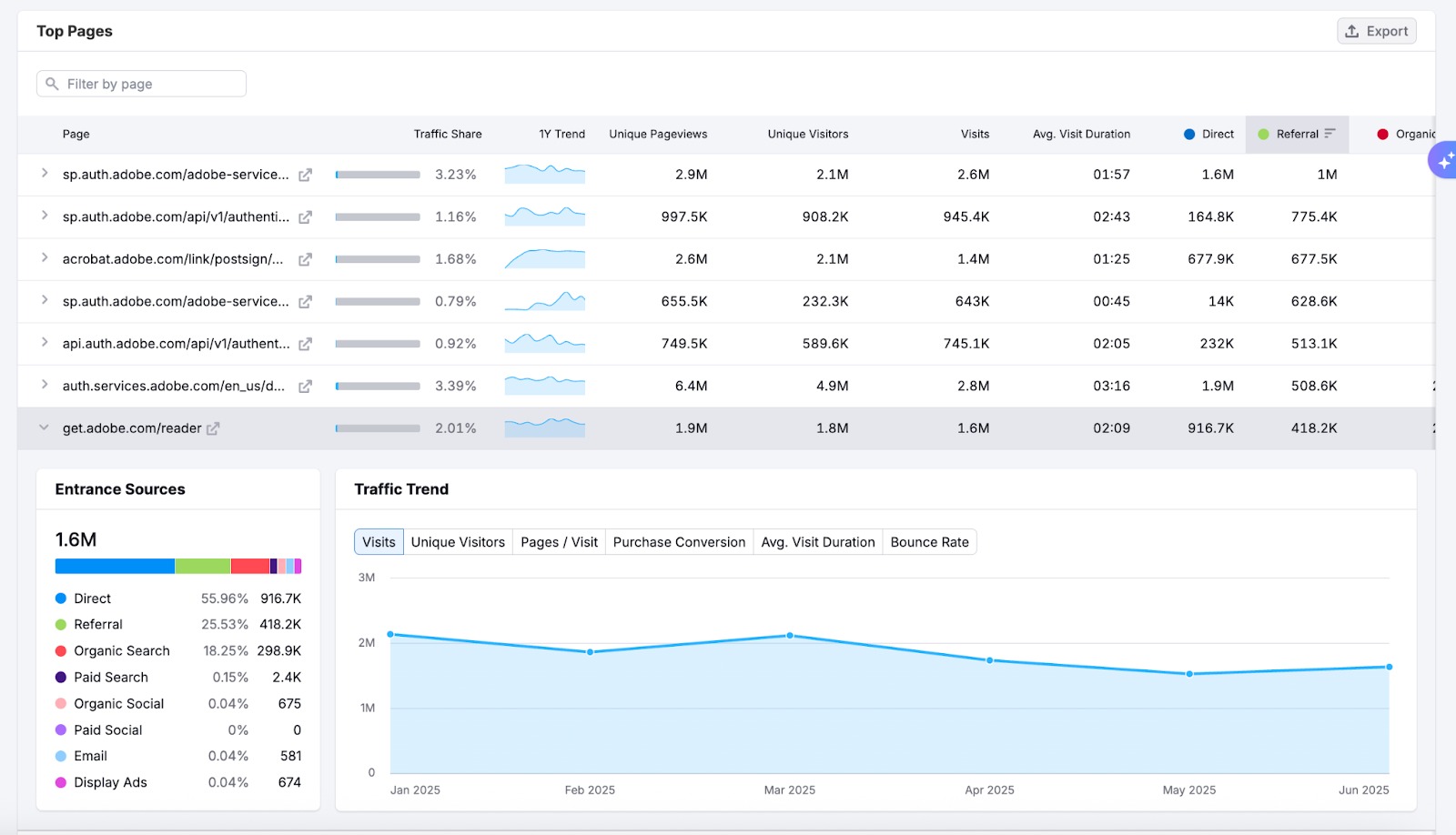
Here’s a look at the top pages dashboard for Adobe.com. The report reveals a number of pages that receive high volume traffic from referrals.
For example, the https://get.adobe.com/reader/ page gets a tremendous amount of referral traffic. Working backwards, we can see that a ChatGPT query like, “I need a PDF Reader, can you recommend which one is best with links?” likely leads users directly to high-intent resources like Adobe’s official download page.
This demonstrates how informational queries—especially when phrased as explicit requests for recommendations with links—can serve as powerful drivers of downstream traffic to trusted product pages.
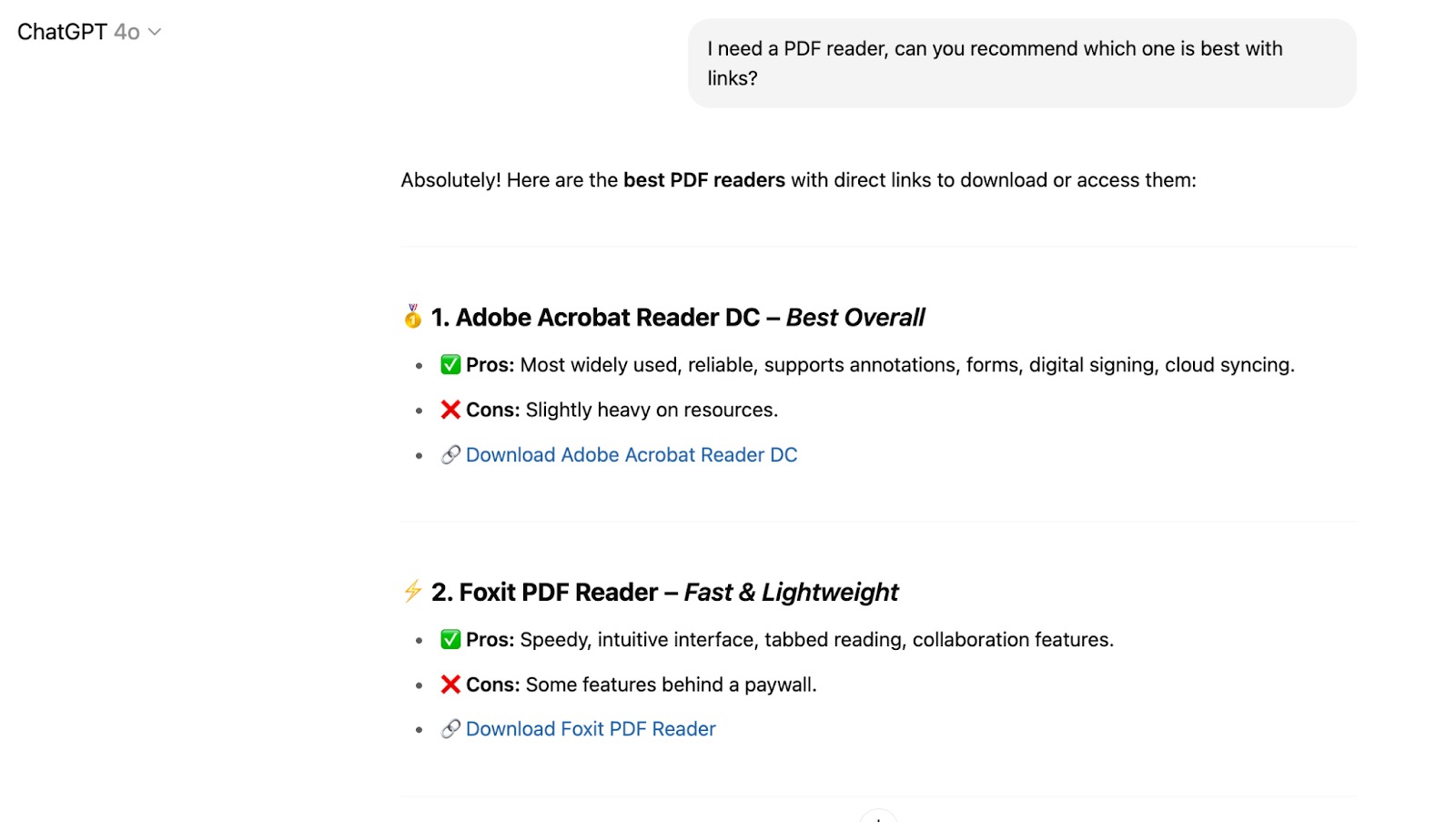
Here are a few key factors contributing to that referral-driven performance:
- The type of content receiving referrals
- Structural elements that support visibility
- Topics and formats that align with AI-generated answers
Pro Tip: Use the Organic Research tool to investigate which keywords these pages rank for, then develop or optimize similar content of your own.
Step 3. Track Your Keyword Visibility in ChatGPT and Google AI Mode
To understand how your content performs in AI-powered search environments, go to the Position Tracking tool and activate tracking for both ChatGPT Search and Google AI Mode.
These are two of the most important AI referral sources available today—so if you're aiming to boost visibility in the AI-powered web, this is where you start.
With this feature, you can:
- Track visibility and rankings for up to 50 keywords in ChatGPT Search
- Compare performance across ChatGPT and Google AI results
- View real SERP snapshots showing how each AI assistant references your content
- Identify your domain's placement—whether cited in the main AI response or in supporting links
- Analyze differences in how your content performs in AI search versus traditional results
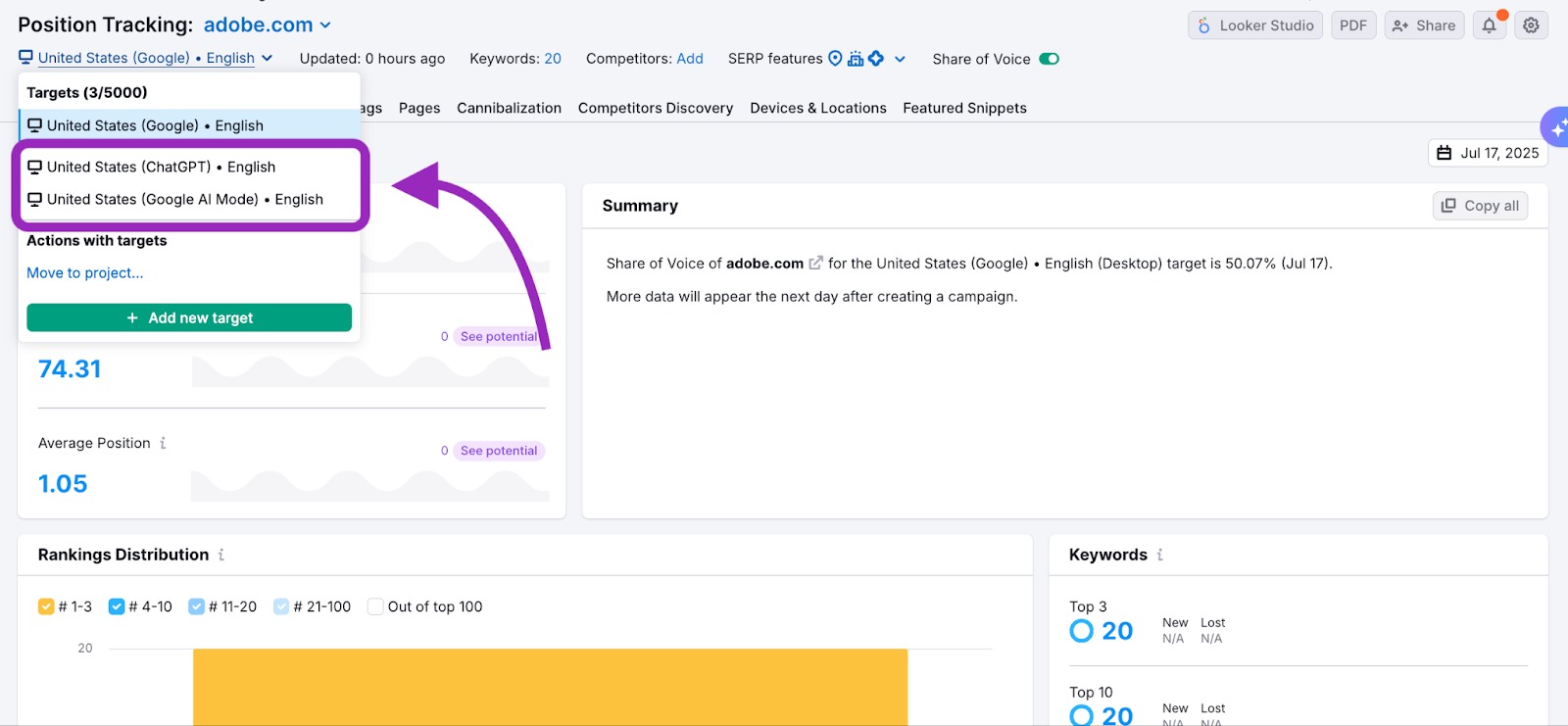
By monitoring both ChatGPT and Google AI Mode, you’ll uncover unique opportunities and content gaps. Then, refine your pages to better align with the formats and topics most likely to be surfaced by AI assistants.
Step 4. Understand and Optimize Brand Perception in AI Conversations
Once you've tracked traffic patterns and keyword placements, it's time to understand why your brand shows up—or doesn’t—in AI-generated responses. That’s where the Semrush AI Toolkit comes in.
This tool analyzes real conversations from platforms like ChatGPT, Gemini, SearchGPT, and Perplexity to reveal how AI systems describe your brand, which questions users are asking about you, and how you stack up against competitors.
Inside the AI Toolkit, you'll discover:
- How your brand is portrayed across AI platforms—including tone, sentiment, and common descriptors
- Which AI-generated answers mention your competitors more often—and why
- What real users are asking AI about your brand, industry, or product category
These insights let you go beyond rankings and traffic to address what really drives AI visibility: relevance, trustworthiness, and utility in the eyes of both AI platforms and users.
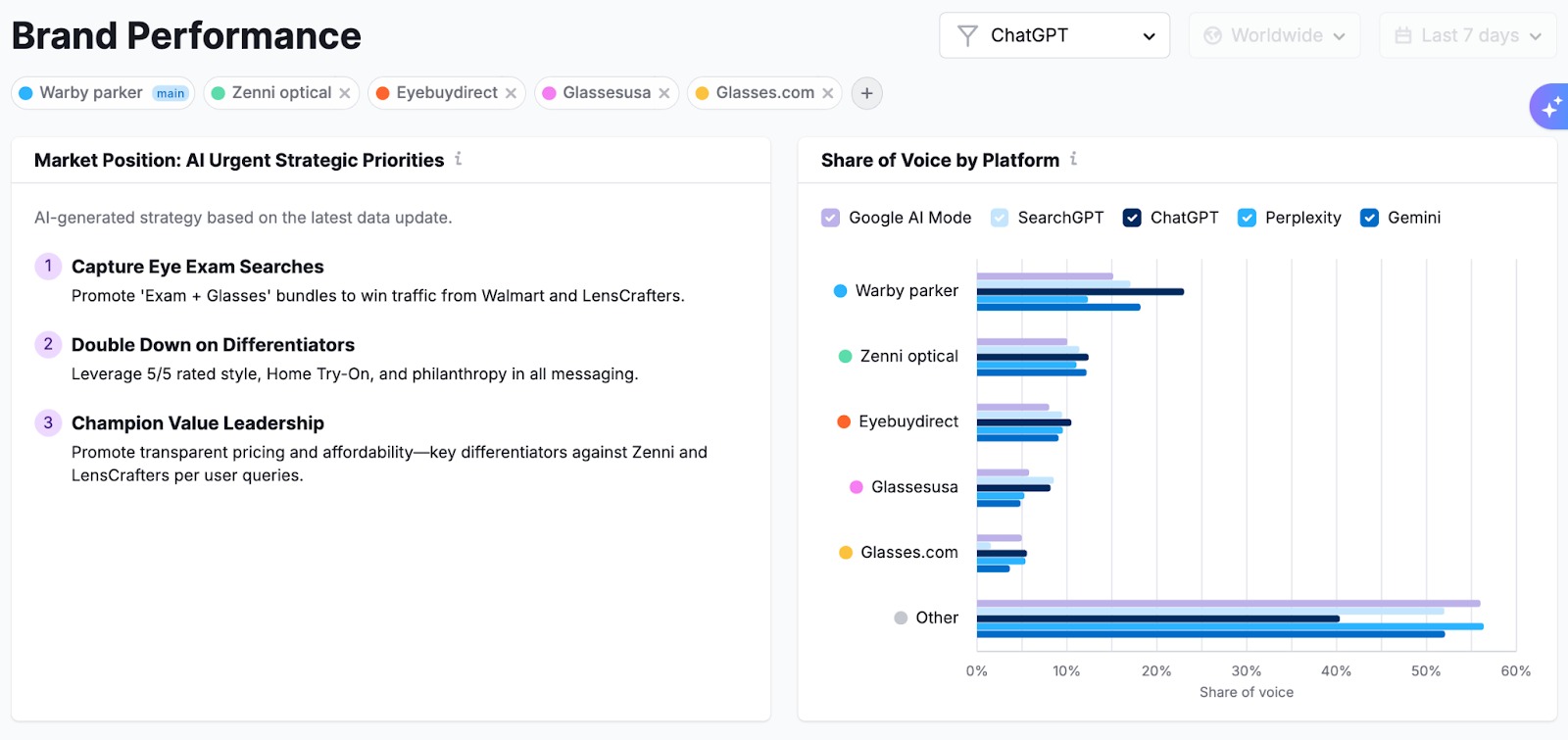
From there, the Toolkit offers strategic recommendations powered by AI—helping you refine brand messaging, optimize underperforming pages, and align your content with the high-intent queries that shape AI results.
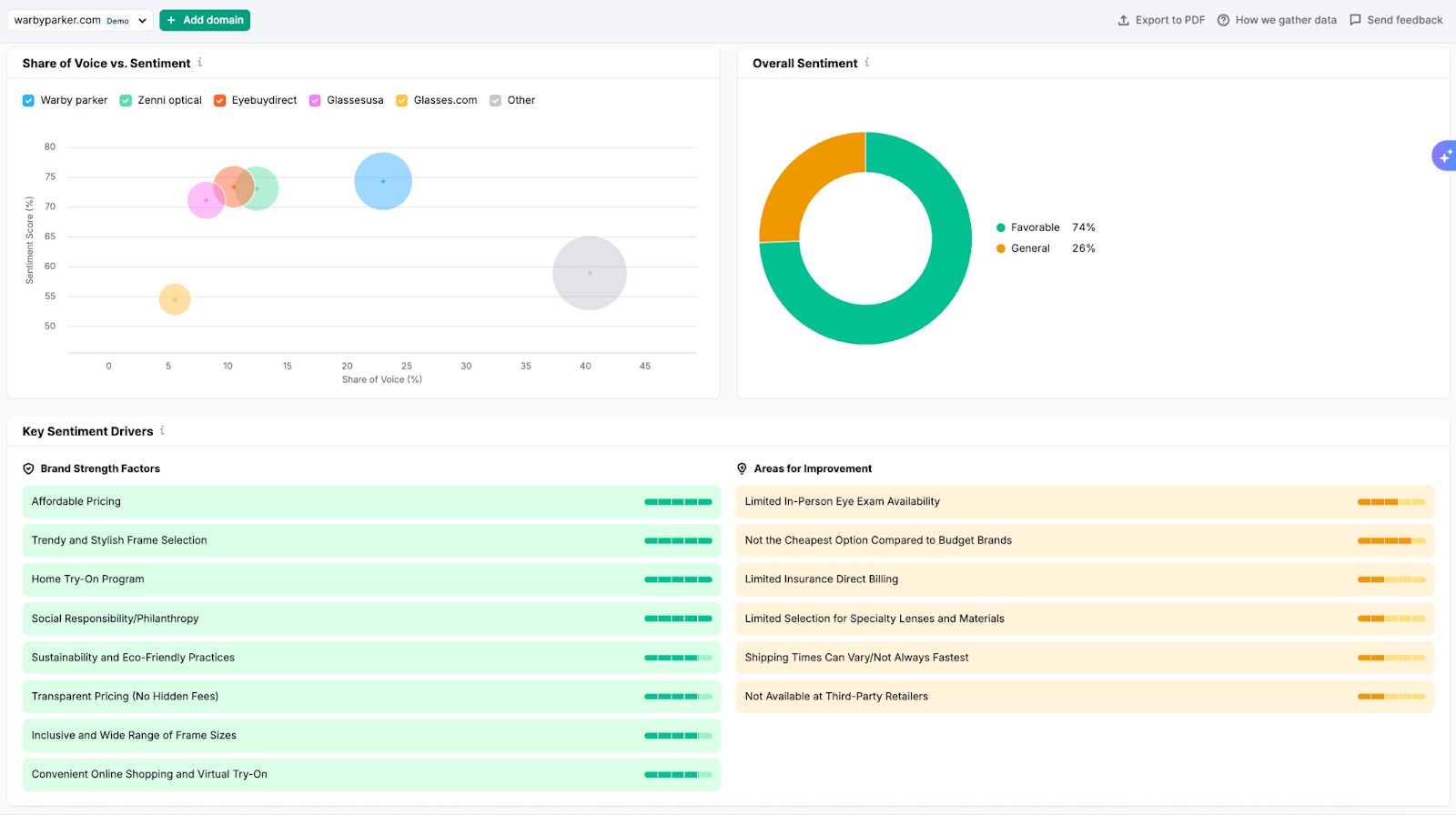
Step 5. Optimize for Generative Engine Discovery
To make sure your content can be discovered and surfaced by AI platforms like ChatGPT, Claude, Perplexity, other AI assistants run a scan using Semrush’s Site Audit, which includes a dedicated AI Search category.

The AI Search audit focuses on Generative Engine Optimization (GEO), helping you fine-tune your site for the AI-first web. Here’s what to check:
- Crawl permissions for AI bots – Confirm your site allows access to crawlers from platforms like OpenAI. If your content is blocked, it won’t be eligible for AI citations.
- Presence of llms.txt – This emerging file standard helps guide LLMs just like robots.txt does for traditional search engines.
- Indexability & accessibility – Ensure key content isn’t blocked or hidden from crawlers due to technical issues like noindex tags or JavaScript rendering problems.
With over 140 technical and on-page checks—including crawlability, hreflang usage, AMP issues, and more—the Site Audit gives you a full picture of your SEO and GEO health.
Pro Tip: Schedule weekly audits to stay ahead of new AI crawling standards and protect your visibility across emerging search channels.
Solution
Boost your visibility across AI-powered search platforms by following these key steps:
- Use the AI Traffic dashboard to identify which assistants (ChatGPT, Gemini, etc.) are sending traffic to your competitors.
- Check the Top Pages dashboard to uncover referral-heavy content and formats likely to be cited by AI platforms.
- Track keywords in ChatGPT and Google AI Mode with the Position Tracking tool to monitor your AI search visibility.
- Analyze brand perception and user queries with the AI Toolkit to refine messaging and content strategy.
- Run a Site Audit with the AI Search category to ensure your site is crawlable by LLMs and includes llms.txt.
Follow these steps to improve AI discoverability, reach more users, and stay ahead in the evolving search landscape.